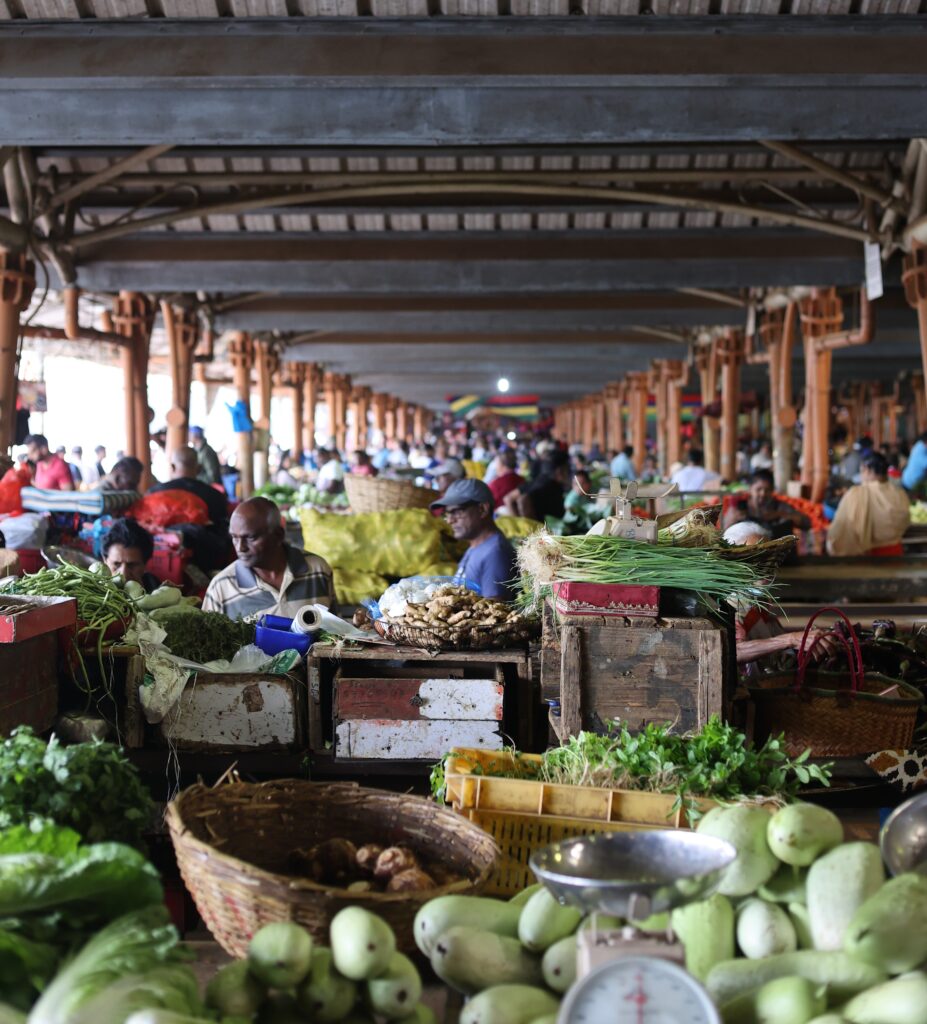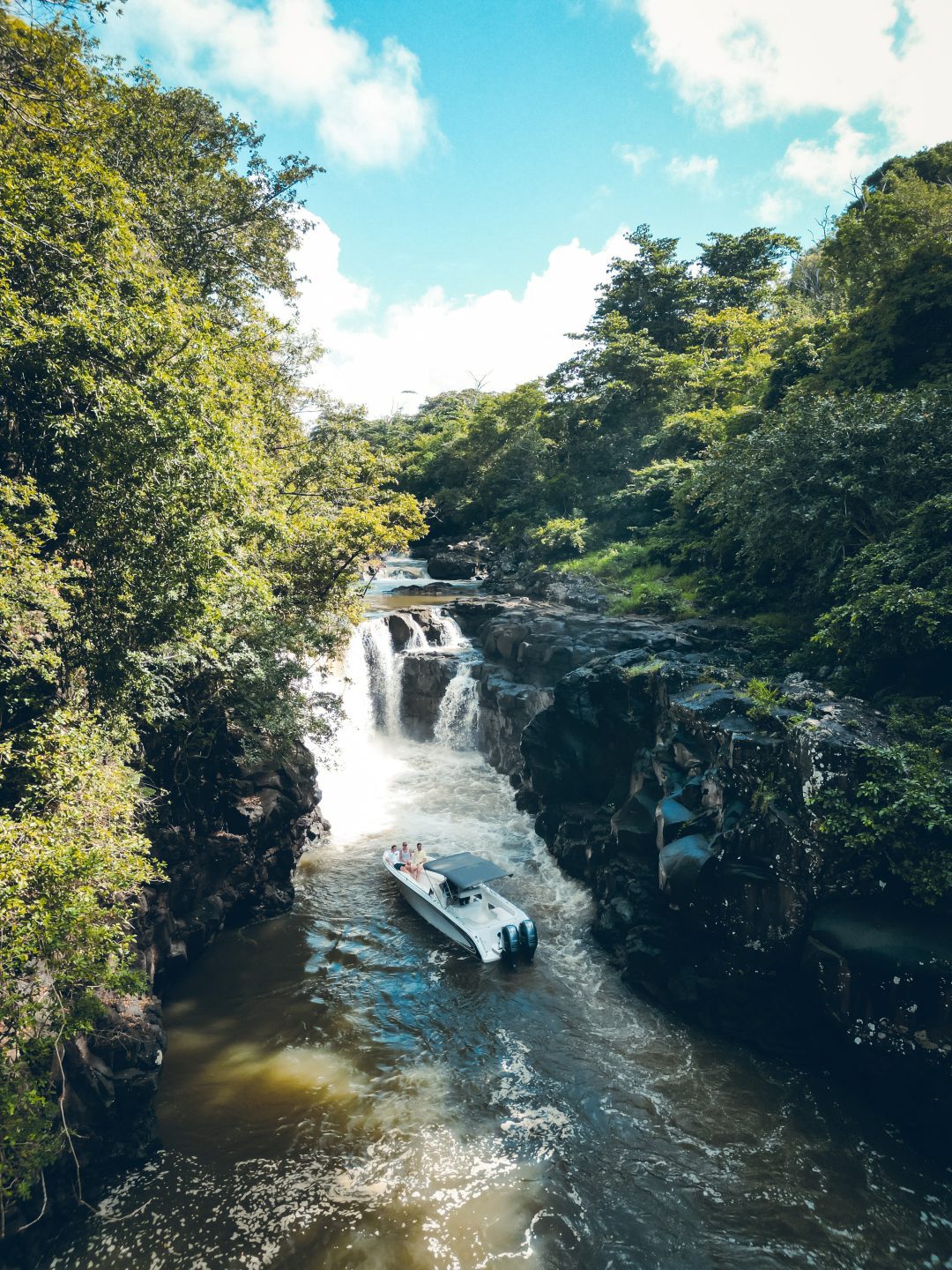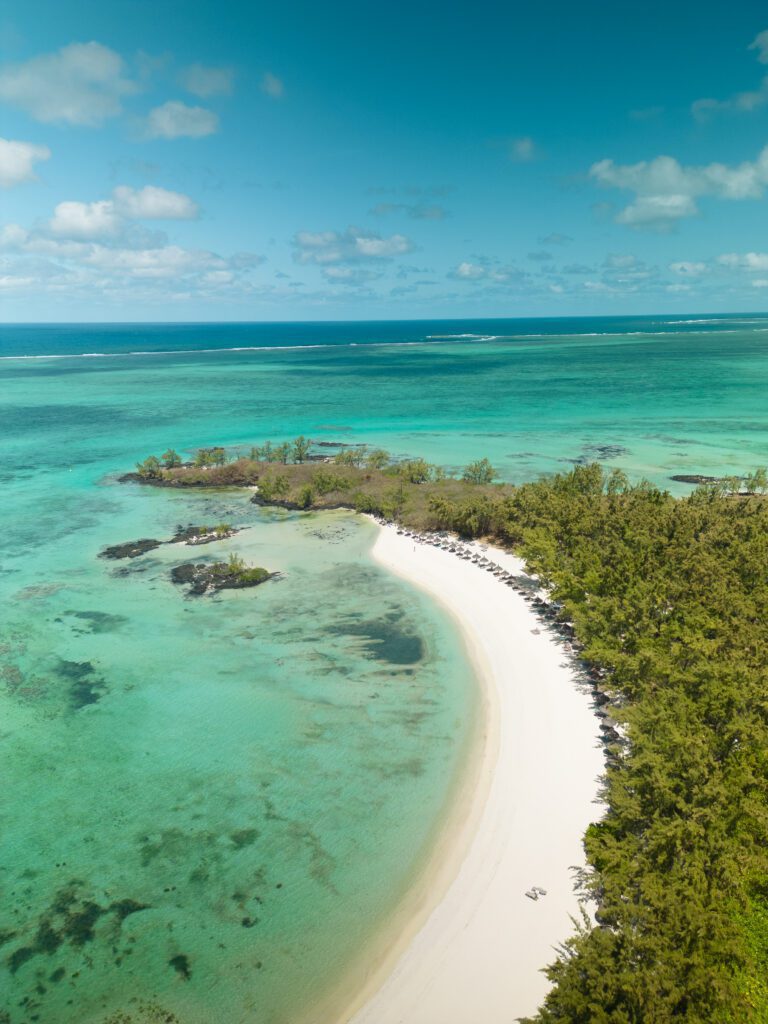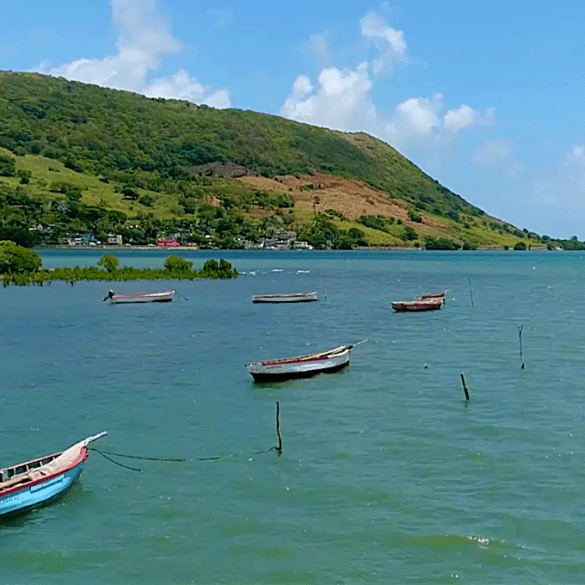The east of Mauritius, rich in heritage, is a true blend of history and culture. This region is renowned not only for its historical sites, witnesses to battles, but also for its magnificent places of worship that punctuate the landscape. Those places of interest in the East of Mauritius include both cultural landmarks and natural wonders, offering a unique glimpse into the island’s past and present.

Explore the Shiv Sagar Mandir in Poste de Flacq
Located in Poste de Flacq, the Shiv Sagar Mandir stands majestically on the Isle of Goyaviers, connected to the coast by a picturesque bridge. Constructed in 2007, this temple is among the most renowned Hindu places of worship in Mauritius, framed by the vast expanses of water that surround it. Its unique location, almost floating on the water, imparts a mysterious and deeply spiritual atmosphere that is well worth exploring. Nestled in the heart of the Flacq region, this site is an ideal starting point to discover other Hindu and Tamil temples in the area, where facades adorned with colorful sculptures offer a fascinating dive into the traditions and teachings of this ancient religion.
Stroll through the centre of Flacq village
The town centre of Flacq is brimming with a variety of shops, including jewellery stores, bazaars, and small shopping centres, all adding a unique character to this vibrant and colourful marketplace. The central square is particularly lively on Wednesdays and Sundays, hosting a market that you won’t want to miss. Here, you can find clothing, various accessories, and local vegetables. As you wander down these lanes, don’t miss the chance to sample the delicious local street food. Dholl puris, candied fruits, and other surprising snacks are waiting for you!


Explore the church of the Holy Spirit in Bel Air
Discover the Holy Spirit Church in Bel Air, an architectural gem dating back to 1865. Originally built from basalt stone, this edifice adopts a colonial style while incorporating Gothic elements, particularly in the design of its arches. It was equipped with a belfry housing a carillon, before suffering the ravages of a violent cyclone in 1892, which left only two towers and some fragments of walls behind. Restored and reopened to the faithful in 1927, the Holy Spirit Church stands out today not only for its historical resilience but also for its impressive sculptures and bas-reliefs, making it one of the most beautiful churches on the island and a valuable witness to the history of Mauritius, especially its eastern region.
Grande Rivière Sud Est Waterfall: a natural treasure
he Grande Rivière Sud Est (GRSE) river, a gem of the Flacq district, offers a spectacular display with its falls near Beau Champ. Immerse yourself in the crystalline waters at the foot of the waterfalls or embark on a hike through the lush vegetation to explore the island’s unique fauna and flora. Further along, the landing at the river’s mouth invites you to embark towards Île aux Cerfs. There, expect an idyllic day filled with fine sandy beaches, clear waters, water sports, golf, and culinary discoveries.


Île aux Cerfs : a must-see gem on Mauritius’ East Coast
Among the experiences not to be missed in the east of Mauritius, a day trip to Île aux Cerfs stands out as truly unmissable. This iconic island, facing Anahita, is renowned for its white sandy beaches, crystal-clear turquoise lagoon and relaxed, tropical atmosphere. It is easily accessible by boat from the Pointe Maurice jetty, GRSE or directly from the resort for Anahita’s property owners and hotel guests. Open to the public, the island features a public beach, several beachfront restaurants, a wide range of water activities, and a world-class golf course designed by Bernhard Langer — considered one of the most spectacular in the Indian Ocean. Whether you’re looking to unwind, explore or enjoy a touch of adventure, Île aux Cerfs offers a blissful escape in the heart of the island’s eastern lagoon.
Peaceful stop at Mahébourg
Our tour of the East concludes in one of the most historic locations on the island, Mahébourg. As the country’s first capital, this village has a unique soul that has always inspired singers and poets. Here, you can admire the lagoon from the waterfront or stroll through its bustling streets. Its museums and market provide insights into what makes Mahébourg a distinctive village within the Mauritian landscape.

From the East to the Southeast, there are numerous places of interest to explore. This journey is great to embrace the rhythm inspired by this region, allowing you to immerse fully into its historical and natural wonders.
Cette publication est aussi disponible en :
 Français
Français

